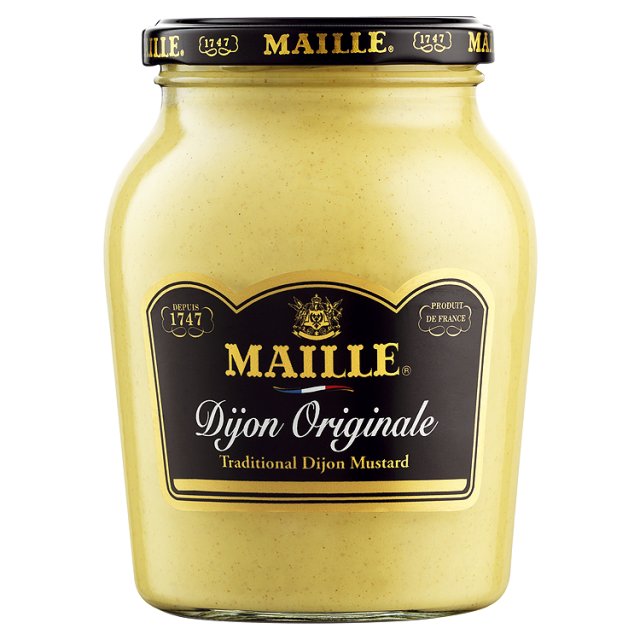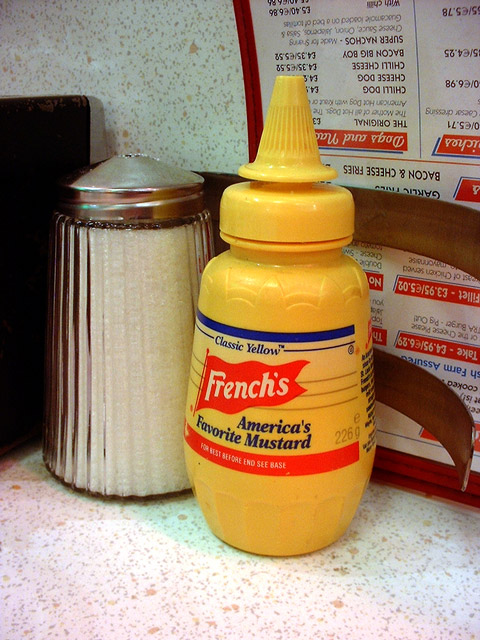According to Dr. Dukan, mustard is a condiment you can easily use. He warns that you have to be careful about using too much because of the salt content, but as a flavoring, it's at the top of the list.
As I've stated in a previous post, I think the average sodium intake for an adult is around 1500mg. A teaspoon of mustard has around 50mg of sodium. Looking at how much salt reduction we practice on the Dukan Diet, it's an extremely small amount of sodium considering how much flavor it adds to food.
Also, since there is such a large variety of mustard, you can get different tastes. Let's take look at some of the types and how they can be used.
DIJON MUSTARD (120mg sodium)

This mustard originated in the Dijon region of France (duh). So of course it contains wine. As you can see above, Dijon probably has the highest sodium content out of the mustards. It's rich and creamy with a slight bite, so you don't really need very much to flavor food. I really like this mustard, just because it makes everything taste so French. A popular brand is Gray Poupon, or the slightly spicier (and in my opinion) more delicious Maille.
YELLOW MUSTARD (56mg sodium)

The all-American favorite. Yellow mustard gets its bright yellow color from turmeric (as far as I know anyway). Look in almost any fridge in the States and you'll find a bottle of it. It's not as spicy as Dijon mustard, bit still has a good tanginess. I just recently started using this. Since it's so yellow and popular on things like hot dogs and hamburgers, I had always assumed it was full of artificial things. On the contrary, it's simply another type of mustard. Give a try if you want a slightly milder flavor. French's is probably the most famous, as well as Plochman's in the little barrel shaped bottle.
BROWN MUSTARD (50mg sodium)
I grew up eating "Spicy Brown Mustard" on things like bratwurst hotdogs and cold cut sandwiches (part of the reason I bulked up so nicely). I haven't actually had it for quite some time, but I can remember it being spicy, almost like horseradish, which I never really went for so much. However, if you want a little punch, try it out. It's quite low on the sodium scale. Gulden's is probably the most famous of this batch.
ENGLISH MUSTARD (42mg sodium)
My only memory of English mustard is the ridiculous spiciness of it. My family only ever seemed to have the powdered version, which I would try to mix with mayonnaise or simply with vinegar. It was always way too hot for my taste. But then again, that was when I was young. It's the lowest of the straight mustards. Why not give it a try. Maybe you'll find a use for it that is amazing.
WHOLE GRAIN MUSTARD (55mg sodium)
In doing research, all I could find about whole grain mustard is that it is basically the same as regular (prepared) smooth mustard, only that the seeds haven't been ground. Because the seeds aren't crushed, the flavor isn't as powerful. However, it has a really nice texture and taste. It's a little harder to spread on things like meat or vegetables, because it's clumpy little bunches of seeds, but it makes great sauce and marinades. Maille makes a nice whole grain mustard, but the king of all mustards for me is Pommery. It comes in a big clay jar and literally, I could eat spoonfuls on food, it's so good. Try it to treat yourself.




No comments:
Post a Comment